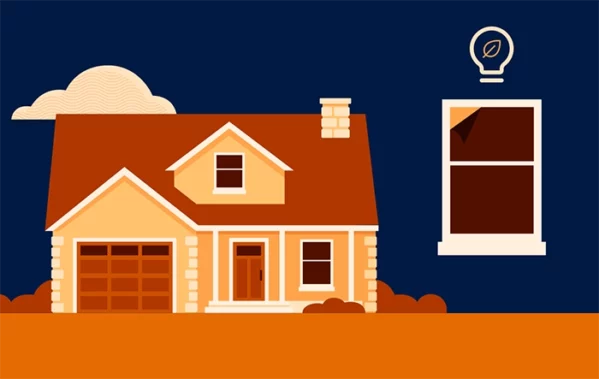Economic and industry news or trends
An inside look at earthquake-proof buildings: Features, designs & materials
The ground shakes forcefully, objects crash to the ground, and everything sways as the earth suddenly becomes restless. Yet, somehow amid the abrupt chaos, buildings continue to stand, unaffected by an earthquake’s impact. But how?
That’s the question we sought to answer when we reached out to Bill Gray, expert builder and jack of all trades at LMC Building & Construction Ltd in Kaikoura, New Zealand. And seeing as the entire island of New Zealand is an earthquake zone, Bill had all the information we were looking for on building earthquake-proof buildings and earthquake-proof houses.
In this interview, Bill shares his personal experience with a magnitude 7.8 earthquake as well as insights on the techniques, materials, building designs, and skilled processes that go into the construction of earthquake-resistant buildings and houses.
Check it out.
Living in New Zealand, you’ve experienced earthquakes. Can you share what that was like?
Bill: New Zealand has around 14,000 to 15,000 a year, and most of these seismic activities are unable to be felt. Only about 150 to 200 quakes are large enough to be felt.
On Nov 14, 2016, just after midnight, Kaikoura was struck by a magnitude 7.8 earthquake. It lasted for over two minutes and the damage was major. The roads in and out of Kaikoura were impassable and closed to the general public for five weeks. The main north-south train line was out of action for weeks. Damage to property was severe, and it has taken until this year to complete the repair process. From personal experience, when the earthquake struck, it was impossible to stand without holding on. Two minutes seems like a lifetime when your house is violently shaking and everything above floor level is being thrown onto the ground. I could watch the concrete floor in our house twisting and turning like waves on a lake. It was impossible to get out of the house, so I just held on.

That must have been a terrifying experience for you. Can you explain some of the most important elements that go into building earthquake-resistant structures?
Bill: Earthquakes, by nature, are either a sideways shaking or an up-and-down shaking (or a combination of both). They’re unpredictable, and at their worst, can cause widespread damage and destruction. Houses built now aren’t necessarily designed to withstand earthquakes without damage but are designed to save lives. Better structural engineering is also helping houses withstand major damage, but first and foremost, they’re designed to remain standing although the damage may be severe, so they don’t injure.
Building earthquake-proof structures to withstand the effects of seismic forces has led to a change in the way we construct reinforced concrete floors with rib raft concrete floors becoming the norm. This involves excavating down to a solid platform (removing the soil) and then adding a compacted hardfill up to the level required. We then pour a 300 mm (11.8 inches) concrete slab on top of this compacted hardfill. Before pouring, pods of polystyrene 1.2 meters by 1.2 meters (3 feet by 3 feet) are placed with 100 mm (3.9 inches) gaps to provide a concrete rib when poured both ways under the topping slab. The ribs, slab and outside concrete are all bolstered with reinforcing rods. This creates a concrete “raft” that can move around on top of the hardfill if an earthquake occurs. The advantage of this kind of concrete foundation is that it can be leveled after an earthquake without cracking up or breaking. It also takes pressure off the rest of the house, as the movement allows for less energy to pass up into the building itself.
The next area of major change has been the way we brace the walls of the house. The bracing must meet a certain criterion, be distributed through the house to act as a shock absorber, and stop the building from twisting under earthquake forces. There are several ways this can be achieved, but the most common is using a gypsum board and a designated screw pattern. Each end of the bracing unit is tied to the floor with designed hold down brackets that meet the bracing requirements.
Ceiling diaphragms are also used as bracing units, and this is applied much the same as wall bracing, using gypsum board and a designated screw pattern. The exterior walls are usually lined with plywood and may be used as bracing. In all cases, it’s the screw/nail patten that will determine whether a particular area of ply will be a bracing unit or just acting as a rigid air barrier.
Read about the latest residential construction trends in our 2022 Industry Report

What are some factors that allow homes or other buildings to fail in an earthquake?
Bill: There are several factors that happen in an earthquake that all affect buildings. On sloping ground and hillsides, there is a risk of slips and rockfalls. On flat ground, a high water table can cause liquefaction where water is forced to the surface, provoking surface flooding. Slumping may occur, causing land to spread and crack open or forcing land together creating lifting. Some areas can be affected by tsunamis. All these potential natural disasters have to be taken into consideration when it comes to house design.

What are the most common materials used when building earthquake-proof homes?
Bill: As mentioned earlier, the main focus when building houses in earthquake zones is saving lives, and it’s secondary to building an earthquake-resistant building. Cost is also a factor because an earthquake resistant house costs more. Housing in New Zealand is particularly expensive already just to meet the cost of surviving an earthquake and our particular climate conditions.
Lightweight roof structures such as light steel or iron roofs make for less stress when a house is shaken by an earthquake. Brick cladding is used quite extensively, as it’s an economical building product and inflexible during an earthquake. With the use of a rigid air barrier such as ply, the house itself can still withstand a fair shake even if the bricks crack apart. Wood, fiber cement products, iron, and various other products are used as exterior wall claddings.
Internally, gypsum board is the lining of choice, as it lends itself to not only giving a smooth wall finish but is strong enough to withstand a good shake and is easily repaired if required.

What is the cost of the required earthquake and climate protections?
Bill: Building houses here is more along the lines of creating a safe environment rather than structural benefits. Most customers are not aware that the house they live in is designed to also save them if a major earthquake happens.
Our design process at the start of the build is almost always about aesthetics and livable space. Once the client is happy with that, we then have to fit the various requirements of the building code into that design. There is no shortcut here. You will not be able to build until all the criteria are met.
Building costs here run around $2,500 to $3,000 New Zealand dollars per square meter on top of land costs. Building is an expensive operation, even for a typical home, with the unseen costs being earthquake and climate protection.
Has it been harder to get the materials you need due to the shortages and increased pricing caused by the pandemic?
Bill: The pandemic has created its own headaches for the building industry, but you have to remember that all of New Zealand is basically an earthquake zone. We have been relatively unscathed throughout the pandemic due to several factors. We are an island nation, so a closed border is easier to maintain. Those same factors also cause headaches when it comes to procuring materials for building. We import so many products as we don’t have the facilities here, but with a closed border, materials have been harder to procure. There are now long waiting lists for basic building materials from timber and roofing to TVs and appliances.
How has Buildertrend helped you improve your earthquake engineering processes?
Bill: Buildertrend, for us, has become that hammer in your nail pouch that you use all the time without putting much thought into it. We are a fairly small operation with 10 of us on the team and, of course, all the trades and others required to build a house. Buildertrend allows us to keep everyone informed of where everything is at.
Our schedules are changing all the time due to material shortages, weather issues, sub-trade availability, and various other factors, and yet, we manage to keep the show running and clients informed through Buildertrend. Coupled to that is having all the info on hand wherever we are. Issues are resolved quickly as we can get info from the site to the person concerned.
With the structural installation requirements being so detailed, we are able to have all the installation instructions online and provided for the job so there are few hold-ups, and we can work from anywhere there is a connection.
If you’re building earthquake-proof buildings, we’ve got the tools you need
Building for the extreme is made easier with the use of tech. If you’re looking for a better system that will improve the way you tackle your toughest construction jobs, schedule a demo today.

Bathroom design trends in 2024
With life being so fast-paced, bathroom designs are embracing the concept of personal sanctuaries. Here are the latest bathroom design trends for 2024.

How window tinting can increase energy efficiency in new builds
Here are five reasons why home window tinting is becoming an increasingly popular choice for and energy-conscious enhancement on new builds.

The 2024 housing market outlook
In this 2024 construction industry update, Buildertrend’s in-house expert shares insight into the lock-in effect, interest rates and the labor shortage.
Want to contribute to our blog?
We believe in building a community for construction – sharing is a big part of that. If you have industry expertise or a story to tell, your voice can reach thousands here.

